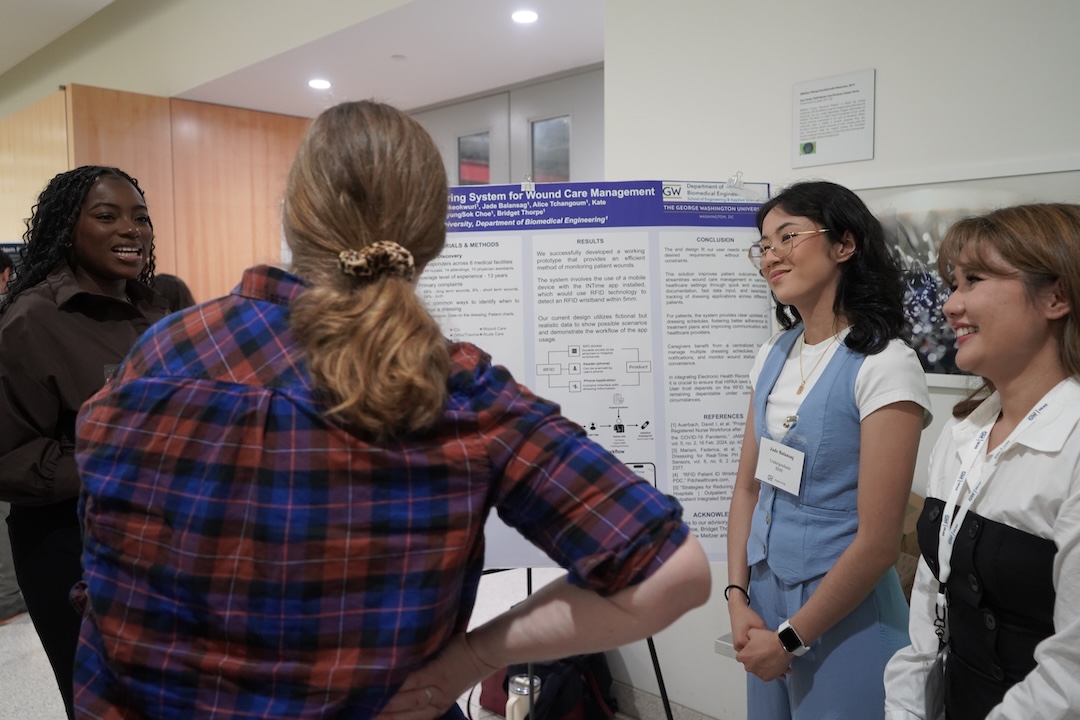Affordable Timer for Tracking Dressing Changes

Team Member(s)
Jade Balansag
Amarachi Elekeokwuri
Kate McLean
Kate Olid
Alice Tchangoum
Mentor(s)
Aditya Loganathan
Dr. Meltzer
Instructor(s)
Dr. HyungSok Choe, BME, GW Engineering
Wound care is a vital practice across many health care fields. Nurses, specifically bedside nurses in hospital emergency rooms are regularly required to care for wounds even though they may not have specialized in wound care. To complicate things, emergency rooms are often busy pulling healthcare professionals in many different directions at once. Affordable Timer provides a way for nurses, patients, and other stakeholders to quickly identify if a patient's dressing has exceeded a preset amount of time and needs to be changed, leading to reduction of the risk of infection and promoting quality care measures.
Why is it important?
Affordable Timer creates a proactive device that helps nurses change dressings in a more timely manner to reduce the chance of sepsis in patients. With a variety of dressings that are used in the hospital as well as the busy nature of the workplace, it can be difficult to accurately track the time a dressing has been on a patient, a problem that can result in the increase of Healthcare-Associated Infections (HAIs) linked to improper wound/dressing care.
What is the coolest thing about your project?
Our project combined a variety of electrical aspects. In the first semester, our design incorporated RFIDs. It was cool to see the design come to life when testing and watching the transmission of data from the sensor to the app. The second semester, our project became more of an electrical device that incorporated a moisture sensor component. Seeing the sensor respond based to the moisture levels was exciting.
What were some technical challenges?
Processing IMU data presented one of the most technically challenging aspects of this project. Although IMUs can estimate displacement through double integration, this approach is highly sensitive to noise and drift. To address this, we explored methods like Kalman filtering and PyPose-based fusion with GPS data to improve orientation tracking and short-term position correction during GPS signal loss. Even when full displacement estimation wasn't feasible, the IMU remained essential for determining heading and detecting swimmer movement, especially during turns. Another challenge involved implementing underwater text-to-speech cues that remained intelligible through bone conduction headphones. Fine-tuning volume, phrasing, and timing to work well above and below water while keeping power consumption low required significant iteration. Lastly, maintaining a stable Bluetooth connection and ensuring reliable data synchronization between the cap and the mobile app introduced additional debugging and compatibility issues.

